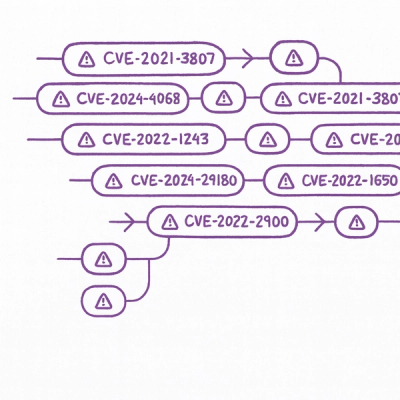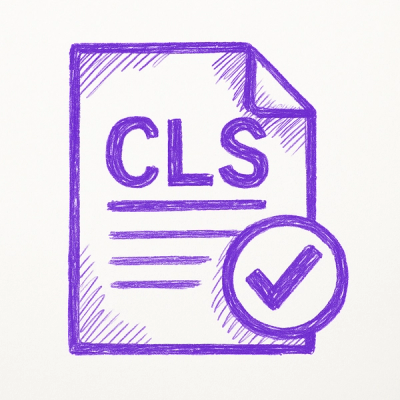
Security News
Astral Launches pyx: A Python-Native Package Registry
Astral unveils pyx, a Python-native package registry in beta, designed to speed installs, enhance security, and integrate deeply with uv.
Userstamp
== Overview
Userstamp extends ActiveRecord::Base[http://api.rubyonrails.com/classes/ActiveRecord/Base.html] to add automatic updating of 'creator', 'updater', and 'deleter' attributes. It is based loosely on the ActiveRecord::Timestamp[http://api.rubyonrails.com/classes/ActiveRecord/Timestamp.html] module.
Two class methods (model_stamper and stampable) are implemented in this plugin. The model_stamper method is used in models that are responsible for creating, updating, or deleting other objects. The stampable method is used in models that are subject to being created, updated, or deleted by 'stampers'.
== Installation
script/plugin install git://github.com/delynn/userstamp.git sudo gem install userstamp== Usage The assumption is that you have two different categories of objects; those that manipulate, and those that are manipulated. For those objects that are being manipulated there's the Stampable module and for the manipulators there's the Stamper module. There's also the actual Userstamp module for your controllers that assists in setting up your environment on a per request basis.
=== Example Assume a weblog application has User and Post objects.
class CreateUsers < ActiveRecord::Migration def self.up create_table :users, :force => true do |t| ... t.userstamps # use t.userstamps(true) if you also want 'deleter_id' end end
def self.down
drop_table :users
end
end
class CreatePosts < ActiveRecord::Migration def self.up create_table :posts, :force => true do |t| ... t.userstamps # use t.userstamps(true) if you also want 'deleter_id' end end
def self.down
drop_table :posts
end
end
class User < ActiveRecord::Base model_stamper end
class ApplicationController < ActionController::Base include Userstamp end
If all you are interested in is making sure all tables that have the proper columns are stamped by the currently logged in user you can stop right here. More than likely you want all your associations setup on your stamped objects, and that's where the stampable class method comes in. So in our example we'll want to use this method in both our User and Post classes:
class User < ActiveRecord::Base model_stamper stampable end
class Post < ActiveRecord::Base stampable end
Okay, so what all have we done? The model_stamper class method injects two methods into the User class. They are #stamper= and #stamper and look like this:
def stamper=(object) object_stamper = if object.is_a?(ActiveRecord::Base) object.send("#{object.class.primary_key}".to_sym) else object end
Thread.current["#{self.to_s.downcase}_#{self.object_id}_stamper"] = object_stamper
end
def stamper Thread.current["#{self.to_s.downcase}_#{self.object_id}_stamper"] end
The stampable method allows you to customize what columns will get stamped, and also creates the +creator+, +updater+, and +deleter+ associations.
The Userstamp module that we included into our ApplicationController uses the setter method to set which user is currently making the request. By default the 'set_stampers' method works perfectly with the RestfulAuthentication[http://svn.techno-weenie.net/projects/plugins/restful_authentication] plug-in:
def set_stampers User.stamper = self.current_user end
If you aren't using ActsAsAuthenticated, then you need to create your own version of the set_stampers method in the controller where you've included the Userstamp module.
Now, let's get back to the Stampable module (since it really is the interesting one). The Stampable module sets up before_* filters that are responsible for setting those attributes at the appropriate times. It also creates the belongs_to relationships for you.
If you need to customize the columns that are stamped, the stampable method can be completely customized. Here's an quick example:
class Post < ActiveRecord::Base stampable :stamper_class_name => :person, :creator_attribute => :create_user, :updater_attribute => :update_user, :deleter_attribute => :delete_user end
If you are upgrading your application from the old version of Userstamp, there is a compatibility mode to have the plug-in use the old "_by" columns by default. To enable this mode, add the following line to the RAILS_ROOT/config/environment.rb file:
Ddb::Userstamp.compatibility_mode = true
If you are having a difficult time getting the Userstamp plug-in to work, I recommend you checkout the sample application that I created. You can find this application on GitHub[http://github.com/delynn/userstamp_sample]
== Uninstall Uninstalling the plugin can be done using the built in Rails plugin script. Issue the following command from the root of your application:
script/plugin remove userstamp
== Documentation RDoc has been run on the plugin directory and is available in the doc directory.
== Running Unit Tests There are extensive unit tests in the "test" directory of the plugin. These test can be run individually by executing the following command from the userstamp directory:
ruby test/compatibility_stamping_test.rb ruby test/stamping_test.rb ruby test/userstamp_controller_test.rb
== Bugs & Feedback Bug reports and feedback are welcome via my delynn+userstamp@gmail.com email address. I also encouraged everyone to clone the git repository and make modifications--I'll be more than happy to merge any changes from other people's branches that would be beneficial to the whole project.
== Credits and Special Thanks The original idea for this plugin came from the Rails Wiki article entitled {Extending ActiveRecord}[http://wiki.rubyonrails.com/rails/pages/ExtendingActiveRecordExample].
== Contributors / maintenance / enhancement
FAQs
Unknown package
We found that userstamp demonstrated a not healthy version release cadence and project activity because the last version was released a year ago. It has 1 open source maintainer collaborating on the project.
Did you know?

Socket for GitHub automatically highlights issues in each pull request and monitors the health of all your open source dependencies. Discover the contents of your packages and block harmful activity before you install or update your dependencies.

Security News
Astral unveils pyx, a Python-native package registry in beta, designed to speed installs, enhance security, and integrate deeply with uv.

Security News
The Latio podcast explores how static and runtime reachability help teams prioritize exploitable vulnerabilities and streamline AppSec workflows.

Security News
The latest Opengrep releases add Apex scanning, precision rule tuning, and performance gains for open source static code analysis.